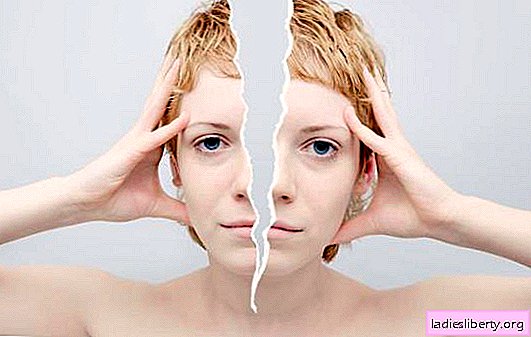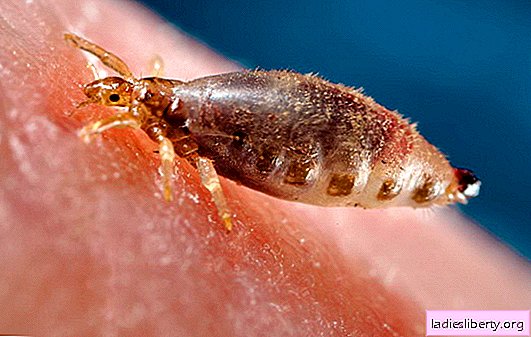
Do you hurt too?
According to statistics, after neurological and toothache, headache is the most difficult for patients to tolerate and is one of the most frequent reasons for seeking medical attention. Headache as an independent disease is not allocated, it always signals the presence of certain pathologies, and of a very different nature: from neurological to vascular, etc.
Often a headache: what is a headache
Headache (or cephalgia, cephalgic syndrome) is a specific pain syndrome that affects the head and, in part, the neck and collar area. By its nature, cephalgia can manifest itself extremely variably, both in localization and in character.
Constant headache: causes
Lomit, pulls, pulses, pierces ... Why? To answer the question why the head often hurts - the reasons must be sought in the mechanism of development of this condition. Understanding the causes and mechanisms of headache development is impossible without minimal knowledge of anatomy. Turn to the basics.
Anatomical reference
The following elements can be distinguished in the structure of head tissues:
- Primary "layer" (soft tissue). Includes skin (3 layers: epidermis, dermis and hypodermis), the so-called "tendinous helmet", blood vessels, etc. All the structures of the soft tissues of the head are richly supplied with neural tissues. However, the density of nerve receptors is strictly individual for each person, so even for the same reason, the intensity of pain in two people will vary significantly.
Nevertheless, it is worth noting that the nerve fibers of the soft tissues do not penetrate so deeply and end approximately at the level of the tendon helmet. Therefore, pain with lesions of soft tissue will be felt superficially.
- Bones (bone structures). Includes the periosteum and the bones themselves. Inside the skull are special layers of empty space filled with liquid: liquor. The bone cannot hurt. It is not equipped with nerve endings, but the periosteum is deeply penetrated by them. With an increased concentration of CSF, the tissues of the periosteum are compacted, with the result that the nerve endings become irritated and develop cephalgic syndrome.
- The vascular system. The brain is richly supplied with blood and has a well-developed circulatory system. Large vessels are perfectly innervated (equipped with nerve endings), therefore any pathological processes, temporary or permanent, are felt very acutely.
- The muscle layer. The skull and neck have a fairly powerful muscle frame. Often, headache is a secondary syndrome of a particular myalgic (muscle) process.
- Joints. The skull and spine have many joints. Pathologies of the musculoskeletal system at the level of the head and collar region cause severe and painful headaches.
If something constantly hurts in my head - what are the mechanisms of this
Regardless of the specific cause of the onset of pain, their mechanism is based, in general, on a uniform process.
As has been said, all the structures of the head have a complex and highly developed innervation. Pain occurs when, for one reason or another, irritation of the nerve endings occurs. In the area of the skull, there are also larger nerves, irritation of which leads to even more intense pain: trigeminal, vagus, glossopharyngeal.
However, each of the pathological conditions is characterized by its own mechanism.
1. The mechanism of development of the vascular type. Stenosis (narrowing) or occlusion (blockage) of the arteries and veins lead to a narrowing of the lumens and irritation of the nerve endings of the major blood arteries. This is observed, for example, with developed atherosclerosis, hypertension, vegetative-vascular dystonia, etc.
2. Myalgic (muscle) mechanism. Muscles are known to have contractility. This quality of muscle tissue is achieved by conducting electrical nerve impulses directly to the tissues. Accordingly, muscles have an incredibly complex system of nerve endings. Any, even minor changes from the muscles will certainly respond with a strong pain syndrome. The most common mechanism is muscle spasm.
Spasms can occur both for subjective reasons (for example, excessive activity of the nervous system, trauma), and for objective reflex reasons (some diseases and conditions: hyperthyroidism, muscle tension in response to osteochondrosis, etc.).
3. Liquorodynamic mechanism. It is associated with a violation of the circulation of cerebrospinal fluid (cerebrospinal fluid) through the cavities of the skull and spinal cord. As a result of its excess, the periosteum and brain tissue are squeezed, and a stable cephalgic syndrome is formed. Observed, for example, with hydrocephalus, increased intracranial pressure.
4. Toxic and infectious mechanisms. Observed when exposed to the head structure of active chemicals (calcium salts, phosphorus), and in some infectious diseases (meningitis, due to which edema and inflammation of the meninges and others develop).
5. Neurological mechanism. In this case, cephalgia develops as a result of the defeat of sensory nerve fibers.
6. Mixed mechanism. In this case, there is a complex of several mechanisms, together leading to a pain syndrome.
Often headache - causes of this symptom
The causes of headache can be mass. All of them, one way or another, are “tied” to one mechanism or their complex.
1) "Jump" blood pressure. They can be both permanent and temporary. Blood pressure can change in a greater or less of the normal side (the physiological norm for an adult - 120-130 / 80, there are exceptions). With hypotension (decrease in blood pressure), the vascular tone of the brain decreases, the blood arteries expand and this irritates the roots of the vascular nerves. As a result, a headache develops. With hypertension (elevated blood pressure), a reverse process is observed (narrowing of the vascular lumen as a result of spasm), however, the pain has a pulsating character and is characterized by greater intensity.
Lokazizatsiya: whiskey.
2) Infectious diseases. Pathogenic microorganisms, getting into the bloodstream begin to actively proliferate. Their metabolic products are highly toxic. Being carried along the bloodstream, they enter the blood vessels that provide the brain and irritate the nerve endings, causing pain.
Localization: forehead.
3) The defeat of the jaw joint. Pain due to damage to the joint of the lower jaw, due to high innervation, can radiate to the head. The degree of intensity of discomfort with this can be quite high.
Localization: whiskey, forehead.
4) Body strain (physical, psychological). Under stress, various types of overstrain, lack of sleep constantly headache. Formed so-called. cephalgia (or headache) of tension. It occurs mainly in the morning or evening hours, but weakens at night.
Localization: pain of unclear localization, dull, wandering, bursting.
5) Toxic poisoning. Poisons, vapors of hazardous chemicals (mercury, carbon monoxide, etc.), alcohol (ethyl alcohol) cause organic changes in the nervous structures of the brain. When poisoning by poisonous vapors, gas, there is a decrease in the transport function of hemoglobin, as a result - brain tissue, including nerves get irritated by lack of nutrition and oxygen.
Cephalgia caused by the adoption of ethanol (called "hangover") is due to swelling of the fibers of the brain nerves.
Localization: forehead. Pain arching or constricting (like a hoop).
6) Peak hormonal states and dysfunctions (PMS, pregnancy, etc.). Hormonal dysfunctions contribute to an unstable state of cerebral vessels (either excessive expansion or stenosis is observed). Cephalgia, in this case - a signal of the violation of the normal function of the vessels. Although such a headache rarely entails any dangerous health consequences, there is no particular reason for concern.
7) Diseases of the musculoskeletal system (development of osteophyte growths, cervical osteochondrosis, etc.). Headache is also caused by innervation. Irradiating pain in these pathologies is characterized by high intensity.
Localization: localized in the occipital region. It may be stupid (feeling a blow to the head with a hammer), pulsing.
8) Neurological problems (inflammation of the trigeminal, facial nerve). Pain radiating. Caused by inflammation of the nerve fibers. Localized on one side. Differs in high intensity. Attacks of neuralgic cephalgia are difficult to stop.
One of the most serious, but at the same time, rare neurological diseases are cluster headaches. By localization, they are similar to migraine (temple, orbit), but the intensity of sensations is so great that patients can barely withstand them. Many cases of suicide attempts are known. As mentioned, the probability of developing cluster headaches is less than 0.2%.
Localization: one of the temples, face, eye socket. The pain is throbbing, burning, "breaking."
9) Malnutrition. Lack of nutrition during the day leads to a decrease in the level of glucose in the blood, and, as a result, an attack of headache (after all, as is known, it is the brain that consumes the greatest amount of glucose entering the body for its own metabolic processes).
Localization: the pain is pulsating or aching (mainly), wandering or with an unclear localization.
10) Malignant neoplasm of the adrenal glands. This is most often about pheochromocytoma. Germinating in the endocrine organ, the tumor contributes to the excessive production of specific hormones. The patient develops severe hypertension (the so-called malignant hypertension) with peak values from 180/120. At this pressure, the vessels are subjected to extremely high loads. Accordingly, headaches are also very intense. Fortunately, the likelihood of developing pheochromocytoma is less than one percent.
Localization: whiskey. The pain is throbbing, unbearable.
11) Migraine attack. Migraine is a neurological disease. It consists in the development of two parallel processes: dilation of blood vessels and reduction of their tone, resulting in the formation of edema of nerve fibers and pain. Pain sensations affect one part of the head and are localized mainly in the temples.
Localization: whiskey. The pain is aching or throbbing.
12) Medication. Some medicines can cause cephalgia, as a side effect. These drugs include some vitamins (A), nitroglycerin (nitrate salts).
13) Head injuries. Associated with damage to nerve fibers. By nature resemble the pain of a migraine, but the intensity and duration is slightly higher.
Constantly headache - diagnostic methods
Headache is not a disease, but a physiological condition and a symptom characteristic of many diseases. It is not necessary to diagnose the headache itself, but the initial disease that caused cephalgia.
If you constantly have a headache, it makes sense to suspect next diseases.
- Hypertension, hypotension. Two diametrically opposite pathological conditions. In the first case, blood pressure rises above normal, in the second, it falls below normal values.
Treatment specialists: neurologist, cardiologist. If the disease is caused by endocrine pathology, such as the neuro-endocrine form of the hypothalamic syndrome, the endocrinologist.
Diagnostics: heart rate measurement, ECG ECHO KG.
- Vegetative-vascular dystonia. It develops as a secondary pathology of the hypothalamic syndrome, which is often forgotten.
Treatment specialists: neurologist.
Diagnosis: a specific diagnosis is not required, since the symptoms are characteristic. In some cases - ECG, encephalography.
- SARS, colds, infectious lesions.
The attending specialist: therapist, ENT, infectious diseases.
Diagnosis: general blood test, general urine test, biochemical blood test, sputum test, etc.
- Intracranial pressure.
The attending specialist: a neurologist.
Diagnosis: encephalography.
- Pathology of the musculoskeletal system: osteochondrosis, overgrowth of osteophytes.
Treatment specialist: orthopedist, neurologist.
Diagnosis: radiography.
- Neurological diseases: VBN, migraine, etc.
The attending specialist: a neurologist.
Diagnosis: vascular dopplerography (speed of blood flow in the vertebral and basilar arteries to eliminate vertebro-basilar insufficiency), X-ray.
Regardless of the type of pathology, a headache of any genesis should be considered as potentially dangerous. Health should be monitored closely.
Therefore, if you often have a headache, you should immediately contact a therapist, a cardiologist or a neurologist (one might say, for the initial examination, these are the most "universal" doctors). You should also go through a comprehensive examination. This will allow to exclude serious pathologies (and with a probability of 95% there are no serious pathologies) and begin treatment to get rid of such an unpleasant physiological manifestation.
Often hurts in the head - methods of treatment
Symptomatic headache treatment. Drink any painkiller and the pain will subside. For a while. If the patient wishes to eliminate cephalgia once and for all, it is necessary to fight the source.
However, for temporary relief of the condition there are several recommendations.
- Vascular pain is almost always throbbing and follows the rhythm of the heart. It is localized in the temple area. The point is that often a headache from changes in blood pressure. First of all, it is necessary to take vasodilating drugs of mild action (nifedipine, etc.). However, it is important to keep in mind. All vasodilator medications are serious drugs with a lot of side effects, and their uncontrolled use can lead to disastrous results.
Hot water is sometimes recommended as a non-drug first aid. But this is only partially true. The thing is that hot water leads to a sharp expansion of blood vessels, before that being in a spasmodic state.
A sharp pressure drop is able to provoke rupture of the vessel (stroke). To achieve a therapeutic effect, you should prepare a basin with warm (no more than 35-45 degrees) water and dip hands and / or legs into it.
- Cephalgia caused by an infectious lesion. Anti-inflammatory drugs and analgesics (Ketorol, Nise, Nurofen, etc.) will help.
- Neurological pain. It is extremely difficult to stop a neurological headache. Antispasmodics and analgesics (No-shpa, ketorol, analgin, etc.) have proven themselves well.
- The pain of obscure origin. Most often, the headache is mixed, so it is impossible to unambiguously understand what type it is. If the origin and cause of the pain is unclear, the best option is to use antispasmodics and analgesics. In small dosages, they are not particularly dangerous, and also not addictive.
Anyway, it is strongly recommended to contact the above-mentioned specialists and undergo a full examination.
Often headache - prevention
It is rather difficult to talk about headache prevention. If the reason lies in vascular disorders - here is the most cautious person, the advocate of a healthy lifestyle is not immune from vascular headache. As a prophylaxis of vascular genesis headache, the recommendations are the same as for preventing the development of cardiovascular pathologies.
More movement (moderate exercise), proper nutrition (minimum animal fat).
Neurological pain in 99% occurs for three reasons: inflammation of one of the large nerves, osteochondrosis, spondylosis. To avoid the first - it is necessary to dwell as little as possible in the cold, drafts, to dress warmly. To prevent the second, it is important to stay in the same position as little as possible (for example, during sleep), observe a regime of physical activity, and maintain proper posture during sedentary work.
Cephalgia due to inflammation (infectious), it is easy to prevent, following the recommendations for the prevention of influenza and SARS.
Pain arising from overstrain (whether physical or psychological) can be prevented only by avoiding stress and increased physical activity (which is extremely difficult to do). However, this type of pain easily passes by itself. The main recommendation is to relax more and be less nervous.
For those who have proven pathology, entailing cephalgia, the best prevention will be honest treatment and taking all recommended drugs.
Thus, headache is extremely variable and can occur both in healthy people and those who have some kind of pathology of the cardiovascular, nervous or other system.
The etiology of headaches is complex, so it’s almost impossible to give uniform recommendations for treatment, diagnosis and prevention. Each case should be considered a competent doctor (or rather, a whole group of specialists) directly "on the spot."











